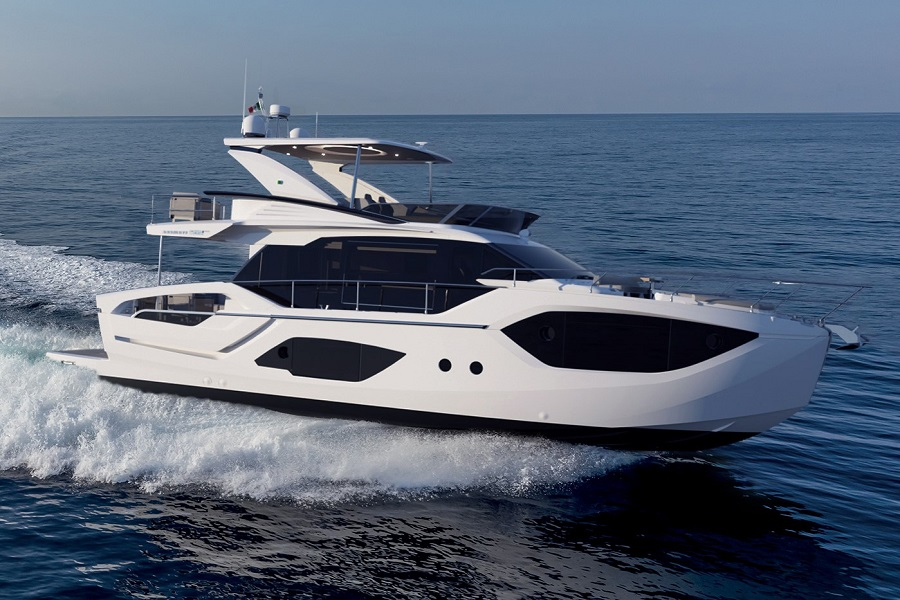 alt="Absolute signatures feature on 52 Fly"/>
alt="Absolute signatures feature on 52 Fly"/>
 alt="Sailability’s MoHan completes gruelling Four Peaks Race"/>
alt="Sailability’s MoHan completes gruelling Four Peaks Race"/>
At 12.44pm on Sunday, 5 February, Sailability Hong Kong’s MoHan crossed the finish line of the 2023 Solaris Four Peaks Race, organised by Aberdeen Boat Club.
It was tough, even in the first bay, Ma On Shan, where our runners needed to kayak for over 3km before tackling the 6km-plus climb to the first peak. South of Lamma island, we experienced waves of several meters for about 20 miles, plus cold and drizzle for a few hours.
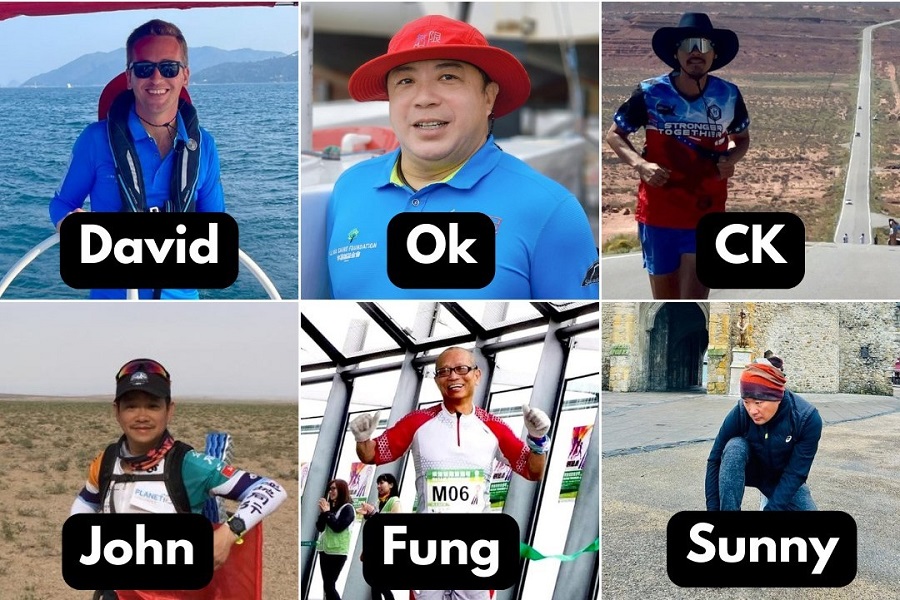
But the team were absolutely fantastic. I had never sailed with them before the race. I intentionally let Ar Tai, skipper of MoHan – who was unable to participate in the regatta – and Fred, a Sailability volunteer who I promoted to co-skipper for the regatta, take care of organisational aspects and training for the event, while I supervised everything from afar. In addition to being co-skipper, Fred is a very strong runner and ran the two toughest peaks.
There was also our helmsman Wai, very good upwind, Sylvia on the jib, Puk on the mainsail, and Ok handling sheets and winches. They didn’t let go of trimming the sails for a minute.
As for the runners, John and Fung had to struggle as counterweights in very important and difficult stages. Sunny Boy and CK had the role of ‘while you’re there’, one of the key roles because it helps everyone. David helped Fred manage the boat’s manoeuvres. Kay was our fantastic steward and delighted us with various delicacies prepared personally.
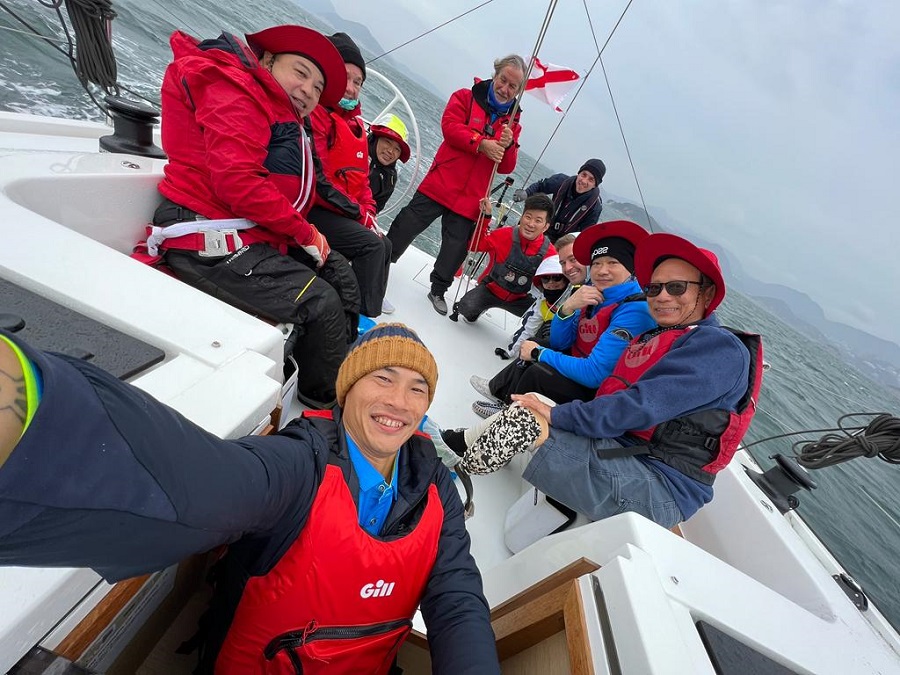
At 10.50am on Saturday morning, we started upwind into Tai Tam Bay in two groups, with four IRC boats and seven boats together in HKPN Division A and B. We set sails with the (smaller) reefed mainsail in 15 knots of wind waiting to get out of the bay to see what the situation was like; over 20 knots were forecast.
In reality, it was 15-18 knots, so we decided to fully open the mainsail, passing an imaginary line between Kau Pei Chau rocks and Sung Kong island. We sailed upwind to the TCS2 buoy and then further up, passing Steep island, west of the Trio islands, Ping Min Chau rock, Shelter island and up to Port Shelter to land at Tui Hoi Tsuen for the tough first peak, Ma On Shan.
In the first bay, Port Shelter, most of the teams launched the runners aboard the kayaks more than 2km from landfall, due to the total lack of wind; normally it would have been 50-100m from the coast. Fred and CK ran 12.75km to climb and descend the 650m of the Ma On Shan Peak in a 2hr 38min round trip including the kayaking.
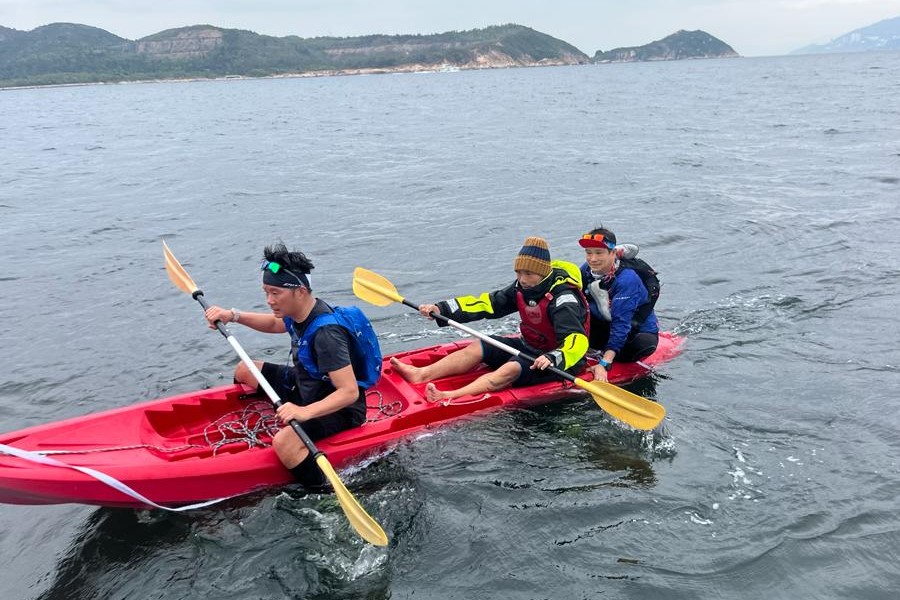
We remained floating in almost no wind for over an hour and then a line of wind arrived in the distance. Taking advantage of the bavette and the current, we brought ourselves within this line and waited for our heroes to reach us after more than 3 kilometres of kayaking. Finally, we were able to set off again in the late afternoon with more than 17 knots of wind downwind towards the second bay, Repulse Bay, to climb Violet Peak.
On the outward stretch, all upwind from Port Shelter, I underestimated the current from the east and we were trapped near Trio Island by 1.8 knots of current, which made us suffer a lot for reach and pass east of East Ninepin Island. At that point, we entered the wind line in reaching and we all got back to enjoying MoHan’s journey, having to work a lot on the setting, before arriving in Repulse Bay late at night.
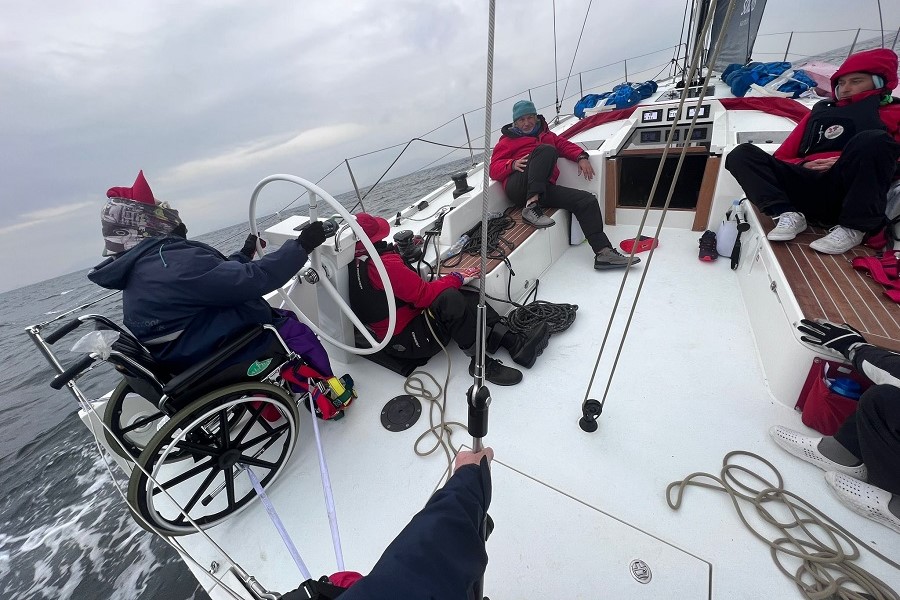
Despite the very strong temptation to open the gennaker that I had hoisted passing Ninepin Island, I decided to live up to our stated intention of wanting to finish the regatta in absolute safety and with the aim of learning to compete together in an inclusive way. So, we kept our foot away from the accelerator and went downhill with the wind pushing the mainsail and jib.
In Repulse Bay, there were continuous gusts up to 13 knots and we decided to drop anchor a couple of hundred metres from land for the race to Violet Peak. David and Fung, who runs with a prosthetic, paddled to the start point where our heroes ran the 5.5km to climb and descend the 405m of Violet Peak in a 1hr 56min round trip.
We remained at anchor with the mainsail hoisted, constantly checking it when the gusts arrived, which alternated with long periods of almost absolute calm. Upon their return at around 1am, we set sail without any effort, with other gusts up to 13 knots, opening the jib as soon as possible. Still reaching, we began the long navigation towards Lantau for the third peak.
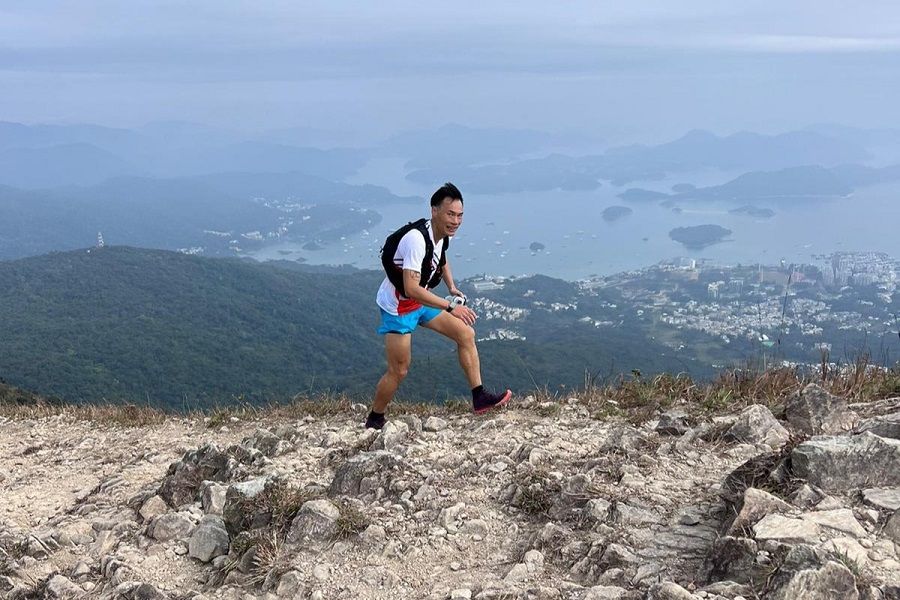
Just past Round Island, we entered the 17-knot wind range with gusts up to 25 knots along the south coast of Lamma Island, where for a few miles the waves reached more than a few metres in height. We arrived in Cheung Sha Wan Bay around 12.30am at night after a furious but extremely enjoyable ride which required the full attention of all involved in the safe operation of the boat.
We lowered the sails and sat at anchor waiting for Fred and CK to kayak the 2km round trip and the 10.5km to climb and descend the 995m summit of Lantau Peak in a 2hr 20min round trip.
We set sail again at dawn with overcast skies and about 10 knots abeam to Shek Kwu Chao Island and then upwind with a maximum of 15 knots of wind, high waves and contrary current up to Lamma island’s Ha Mei Wan Bay and the landing place in Lo So Shing beach.

We suffered a lot at the edge and inside the bay from constant wind shifts, up to almost 180 degrees, which required a lot of effort from Sylvia, Puk, Ok and Wai. Finally, we arrived near the beach. Our heroes, John, who is hearing impaired, and Sunny Boy paddled the 200m to the beach, together with CK who brought the kayak back on board.
We set sail again to the meeting point, on the other side of the island, at Mo Tat Wan. There was variable wind mainly downwind until the exit of the bay and then upwind with over 16 knots with gusts over 20 and waves and contrary current.
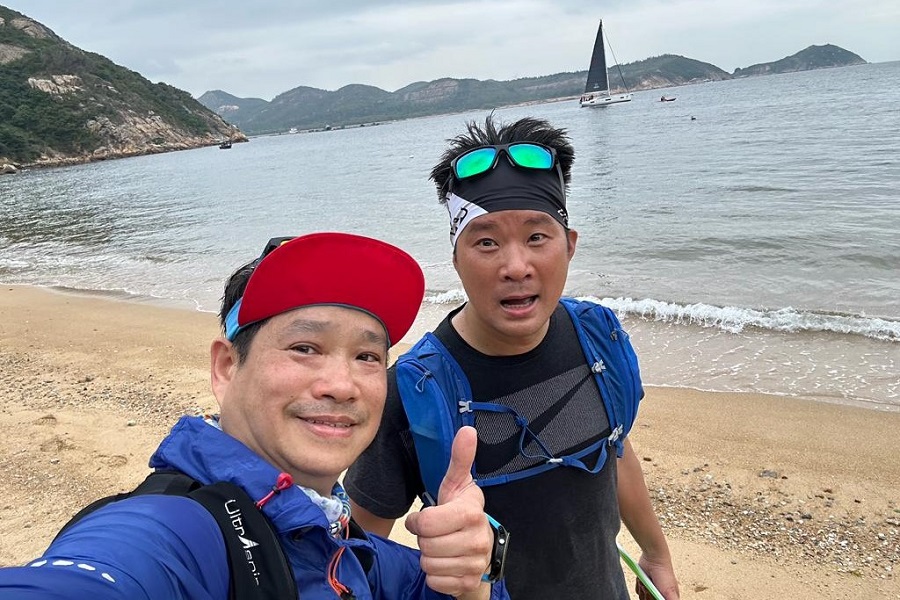
We reached the meeting point downwind and stayed with the mainsail waiting for CK to paddle to the wharf where John and Sunny Boy embarked. It took them exactly 2hrs to ascend and descend the 6km to the 390m-high Mt Stenhouse, kayaking to shore and back.
At 11.50am we set sail again towards the southeast to pass Chesterman Gate and then turned northeast towards the finish line near Round Island, between there and the Aberdeen Boat Club Committee Boat, which masterfully organised and managed the entire event. We also thank the volunteers who gave assistance and carried out checks on land, on shore, along the route, at the summit and an orange buoy placed to the west of the boat itself.
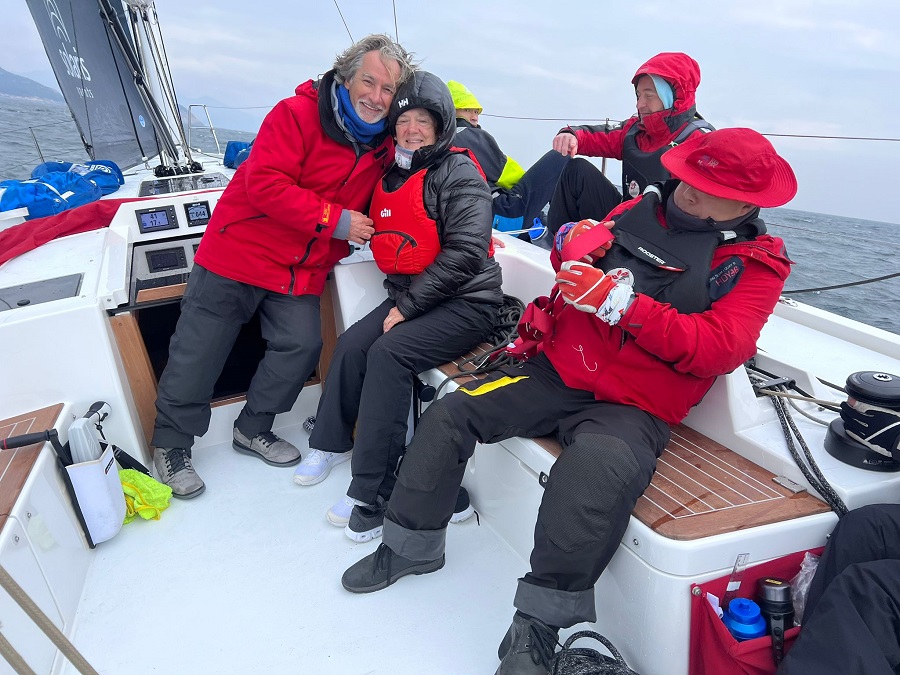
At 12.44pm on the Sunday, we heard the horn, the signal that the race was over for us. We screamed, rejoiced, messed around and hugged each other, all super happy and proud to have fulfilled our dream, an inclusive Sailability team participating in a challenge only dreamed of before.
We sailed for 18 hours and 24 minutes and kayaked and ran the mountains – climbing a total of 2,440m – for 7 hours and 38 minutes. Thanks to MoHan and her comforts, we were all well, happy and protected.
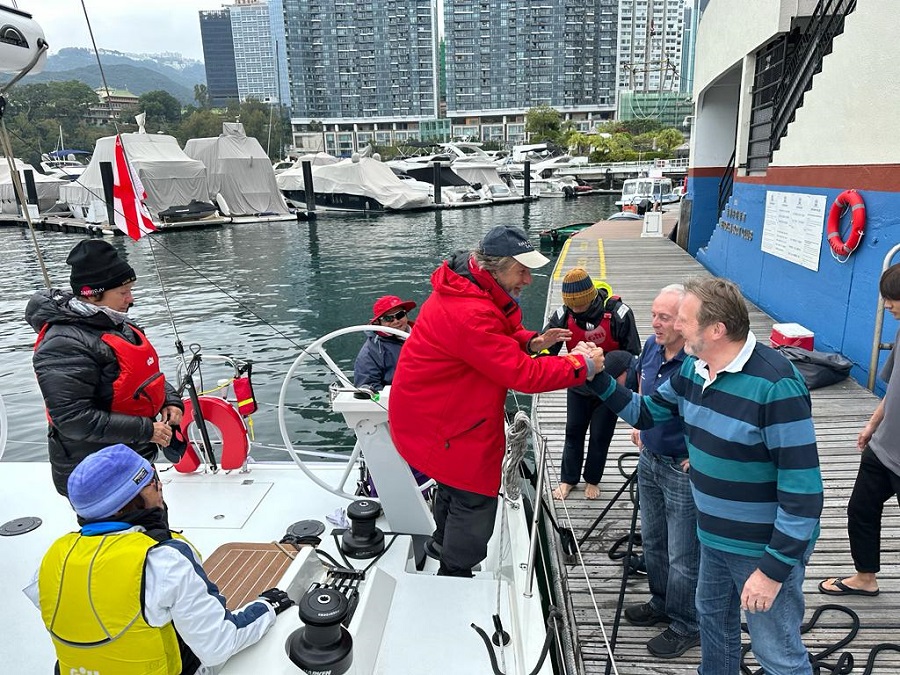
Thanks to Mike, Silvio and Marco, who we took with us, with the dedication to them at the top of MoHan’s mast.
Thanks to the Commodore of the Aberdeen Boat Club and his highly trained and very helpful team.
Thanks to all the participants who we will invite from now until the next race in 2024.
Thanks to all the volunteers who made this wonderful challenging event possible.
Thanks to Kay Rawbone, who founded Sailability Hong Kong with her late husband Mike, for pampering us with food, drink and pleasant chats during these unforgettable hours.
Thanks to Sailability Hong Kong.
Thanks to the Li Ka Shing Foundation and the Hong Kong Solarista Club for making the dreams of many people with disability and other life challenges in Hong Kong come true.
Thanks to Solaris Yachts for having designed and built MoHan, making two constructive modifications to adapt a production model, the Solaris 40.
And thanks to you for reading this report of our adventure.
www.sailability.org.hk